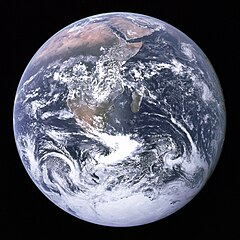International Day against Nuclear Tests
| International Day against Nuclear Tests | |
|---|---|
 | |
| Also called | IDANT |
| Observed by | UN Members |
| Celebrations | United Nations |
| Date | 29 August |
| Next time | 29 August 2025 |
| Frequency | annual |
The International Day against Nuclear Tests is observed on August 29. It was established on December 2, 2009, at the 64th session of the United Nations General Assembly by the resolution 64/35, which was adopted unanimously.[1]
The resolution in particular calls for increasing awareness "about the effects of nuclear weapon test explosions or any other nuclear explosions and the need for their cessation as one of the means of achieving the goal of a nuclear-weapon-free world".[1] The resolution was initiated by Kazakhstan together with several sponsors and cosponsors to commemorate the closure of the Semipalatinsk Nuclear Test Site on August 29, 1991.[1]
Following the establishment of the International Day against Nuclear Tests, in May 2010 all state parties to the Treaty on the Non-Proliferation of Nuclear Weapons committed themselves to "achieve the peace and security of a world without nuclear weapons".[1]
Conferences
[edit]On September 15, 2014, the Embassy of Kazakhstan in the United States in co-sponsorship with Arms Control Association, Green Cross International, the Embassy of Canada, and the ATOM Project held a conference "Nuclear Weapons Testing: History, Progress, Challenges" commemorating United Nations International Day Against Nuclear Tests. The conference took place at the U.S. Institute of Peace in Washington, D.C.[2] This conference was focused on the issue of nuclear weapons testing and the road forward for the Comprehensive Nuclear-Test-Ban Treaty.[2] The keynote presenters included the U.S. Secretary of Energy Ernest J. Moniz, the U.S. Under Secretary of State for Arms Control and International Security Rose E. Gottemoeller, the U.S. Under Secretary of Energy and NNSA Administrator Frank J. Klotz, and the Executive Secretary of CTBTO Lassina Zerbo.[3] The participants of the conference underlined their commitment to the nuclear weapons non-proliferation.
In popular culture
[edit]- NationStates, a popular multiplayer government simulation browser game, celebrates the International Day against Nuclear Tests in a surprising way. On August 29 of every year, nations are granted the ability to use nuclear weapons against each other, leading to a violent multifaceted nuclear war. This tradition started after the mini-games initial appearance on the site for April Fools' Day 2017, and subsequent user requests to make this a regular event.
See also
[edit]- Global Zero, an international non-partisan group of 300 world leaders dedicated to achieving the elimination of nuclear weapons.[4]
- Greenpeace International, a non-governmental environmental organization[5] with offices in over 41 countries and headquarters in Amsterdam, Netherlands.[6]
- International Campaign to Abolish Nuclear Weapons
- International Day for the Total Elimination of Nuclear Weapons
- International Physicians for the Prevention of Nuclear War, which had affiliates in 41 nations in 1985, representing 135,000 physicians;[7] IPPNW was awarded the UNESCO Peace Education Prize in 1984 and the Nobel Peace Prize in 1985.[8]
- Pax Christi International, a Catholic group which took a "sharply anti-nuclear stand".[7]
- Pugwash Conferences on Science and World Affairs
- Sōka Gakkai, a peace-orientated Buddhist organisation, which held anti-nuclear exhibitions in Japanese cities during the late 1970s, and gathered 10 million signatures on petitions calling for the abolition of nuclear weapons.[9][10]
- United Nations Office for Disarmament Affairs
References
[edit]- ^ a b c d "International Day against Nuclear Tests". United Nations. Retrieved 16 December 2012.
- ^ a b "Energy Secretary Moniz's Remarks at the U.S. Institute of Peace Conference -- As Prepared for Delivery". www.energy.gov.
- ^ "Special Sept. 15 Event: Nuclear Weapons Testing: History, Progress, Challenges". www.armscontrol.org.
- ^ "Join the Movement". globalzero.org. Archived from the original on 8 February 2018. Retrieved 21 April 2018.
- ^ "outreach.un.org.ngorelations". www.un.org. Retrieved 21 April 2018.
- ^ "Our offices". greenpeace.org. Retrieved 21 April 2018.
- ^ a b Lawrence S. Wittner (2009). Confronting the Bomb: A Short History of the World Nuclear Disarmament Movement, Stanford University Press, pp. 164-165.
- ^ Profile from Helix Magazine Archived 2009-10-13 at the Wayback Machine
- ^ Lawrence S. Wittner (2009). Confronting the Bomb: A Short History of the World Nuclear Disarmament Movement, Stanford University Press, p. 128.
- ^ Lawrence S. Wittner (2009). Confronting the Bomb: A Short History of the World Nuclear Disarmament Movement, Stanford University Press, p. 125.
